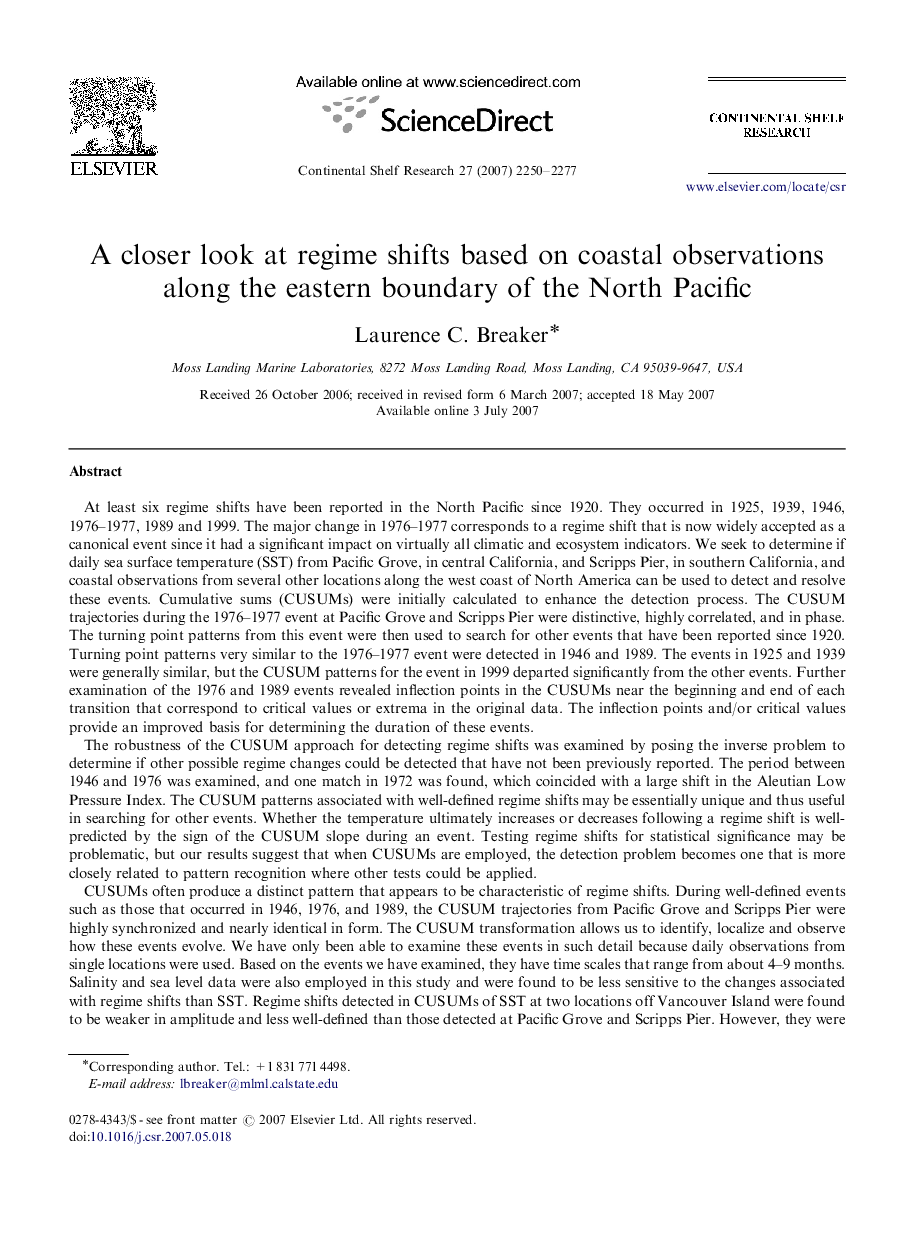| Article ID | Journal | Published Year | Pages | File Type |
|---|---|---|---|---|
| 4533805 | Continental Shelf Research | 2007 | 28 Pages |
Abstract
CUSUMs often produce a distinct pattern that appears to be characteristic of regime shifts. During well-defined events such as those that occurred in 1946, 1976, and 1989, the CUSUM trajectories from Pacific Grove and Scripps Pier were highly synchronized and nearly identical in form. The CUSUM transformation allows us to identify, localize and observe how these events evolve. We have only been able to examine these events in such detail because daily observations from single locations were used. Based on the events we have examined, they have time scales that range from about 4-9 months. Salinity and sea level data were also employed in this study and were found to be less sensitive to the changes associated with regime shifts than SST. Regime shifts detected in CUSUMs of SST at two locations off Vancouver Island were found to be weaker in amplitude and less well-defined than those detected at Pacific Grove and Scripps Pier. However, they were in phase with the events observed further south. Establishing the connection between these results, and changes in the ecosystems of the North Pacific, should be given a high priority. Finally, the results of this study are related to decadal climate variability and provide additional insight into the nature of this phenomenon.
Keywords
Related Topics
Physical Sciences and Engineering
Earth and Planetary Sciences
Geology
Authors
Laurence C. Breaker,
